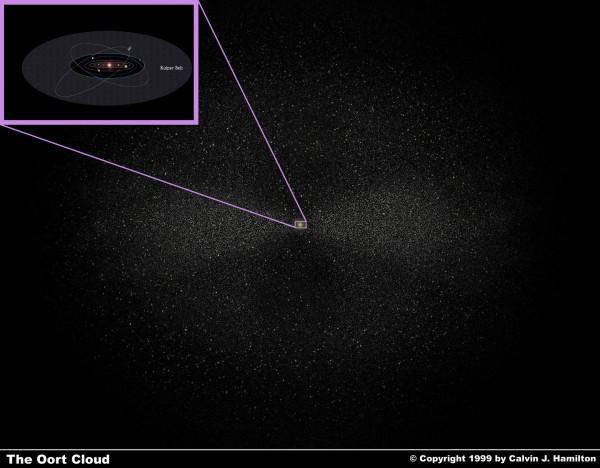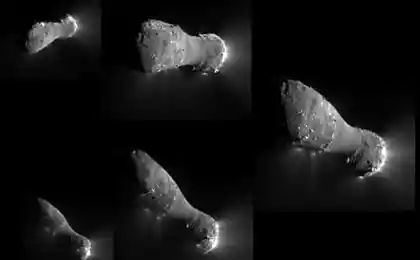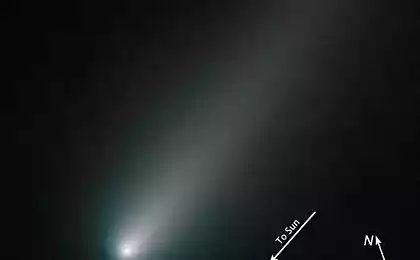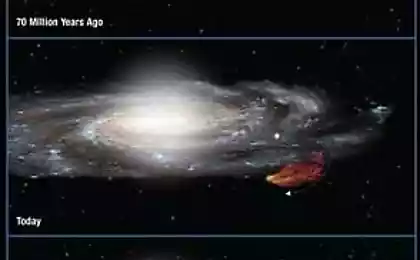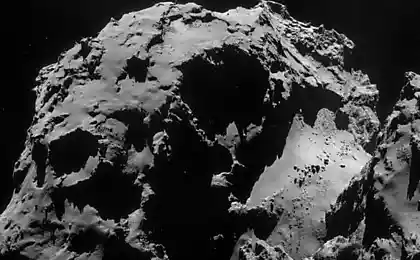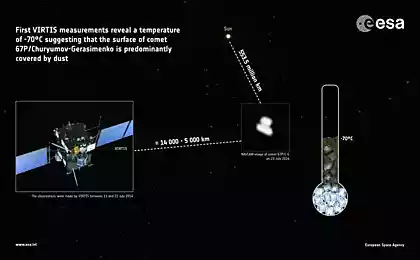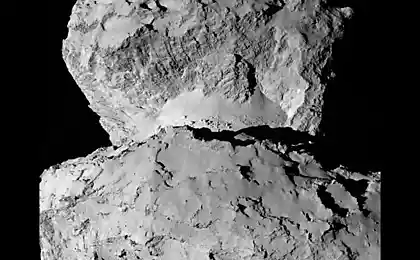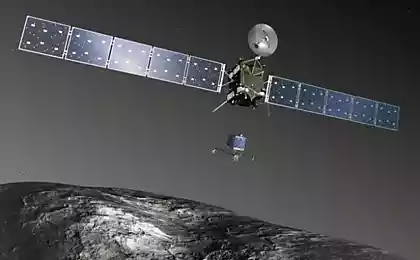Ask Ethan №2: Meet the Oort Cloud
Subramanian Chandrasekhar, on the death of Jan Hendrik Oort i>
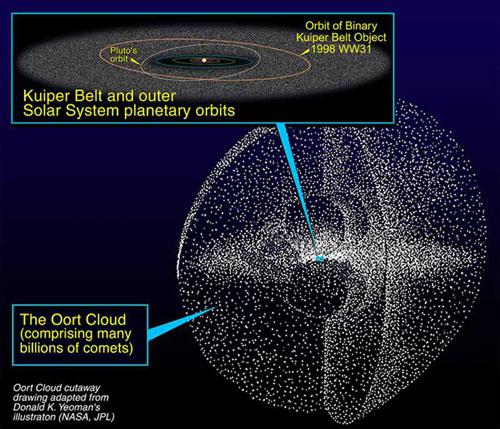
A reader asks:
to detect ever objects belonging to the Oort cloud, in its place, and not only when they pass within our solar system? I think that any discovery of such an object can only be done through the coating or microlensing. Blockquote> Good question. You probably know that until our nearest star four light-years, but our solar system has a size of only 50 times greater than the distance from Earth to the sun (an astronomical unit, AU). And this is just 0.08% of light-years.

Objects which are at a distance, in the Kuiper belt, are often subjected to gravitational effects (usually Neptune) and fired into the solar system, where they can become a comet, if held too close to the sun. But comets come to us not only from there.
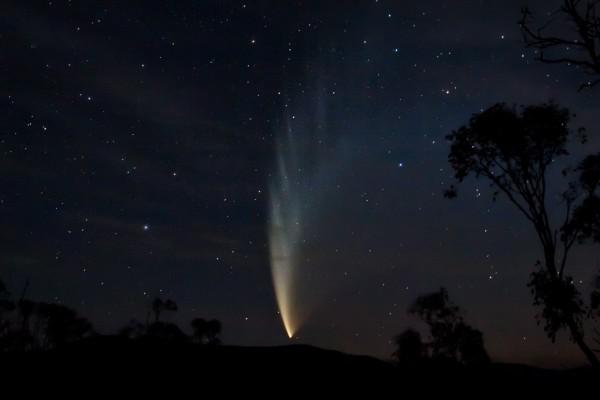
Far beyond the Kuiper belt is the Oort Cloud, a distance of about 50,000 AU from the Sun, or nearly 1 light year. Sometimes we see a comet passing through the solar system - and instead of the orbital period of a little less than a hundred years, what would be expected from the object of the Kuiper Belt, it may be a period of 100,000 years. These long-period comets, like Comet McNaught (pictured above), are common, and their orbits are likely not related to the influence of Neptune.
The Oort Cloud
They supposedly come from the Oort Cloud, which predicted the presence of Jan Oort in 1950. Due to the great distance to it and its lack of luminous objects, as well as from the fact that the distance does not allow these objects to consider the reflected light, they are invisible.
But if they can somehow find? In principle, yes.

Gravitational microlensing happens when not glowing object passes in front of a bright star, temporarily increasing the light, visible from our planet. Unfortunately, most of the mass of the cloud objects so small (no more than 10 15 sup> kg), or one billionth of the mass of the Earth that microlensing caused them a thousand times weaker than we can fix on the modern equipment.
Therefore, any object of this cloud was not fixed - we can see them only when they fly up close enough to us.
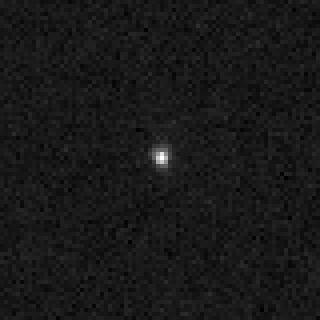
But not all objects are comets. The exception is a small planet Sedna (pictured above).
Unlike most of the objects that we have seen, Sedna is high (about 1000 km in diameter and about 10 21 sup> kg weight), or a million times more than a typical comet. We noticed it only because we were looking for objects beyond the orbit of Neptune, and accidentally stumbled on a very distant object.
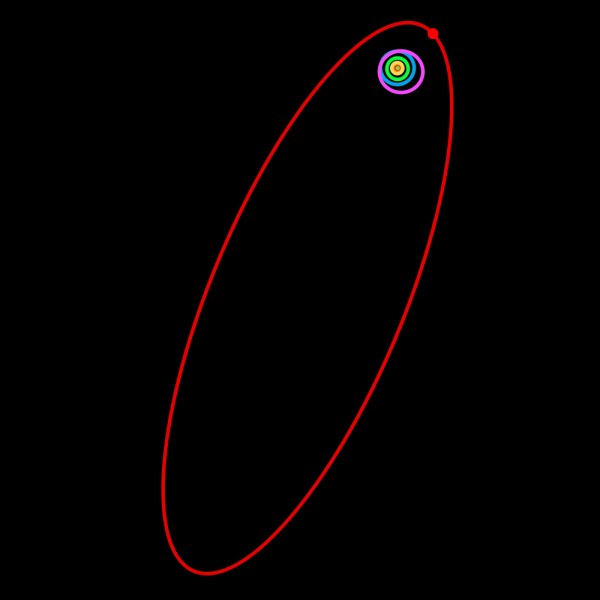
Sedna revolves over 11,000 years, which proves its origin far beyond the solar system, but nevertheless, it is gravitationally bound to us. Because it does not go in the Kuiper Belt, Neptune could not affect on it, which means that it comes from the Oort Cloud - this is the only such a distant object is not a comet, which we were able to observe.
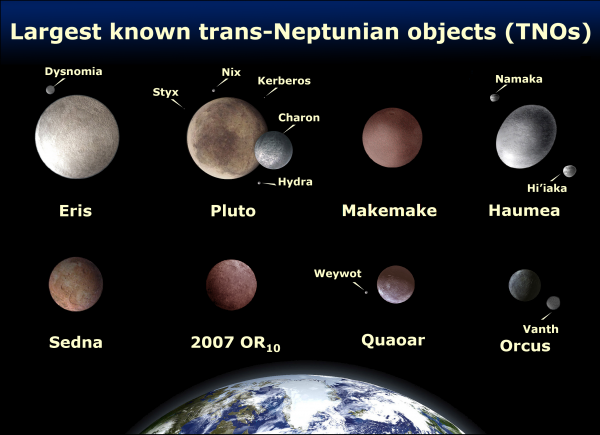
The largest objects beyond the orbit of Neptune i>
And, although we have never seen objects directly in the Cloud Cloud, we know of one object come from there, which is now returned, and that is not a comet.
Source: geektimes.ru/post/252136/


